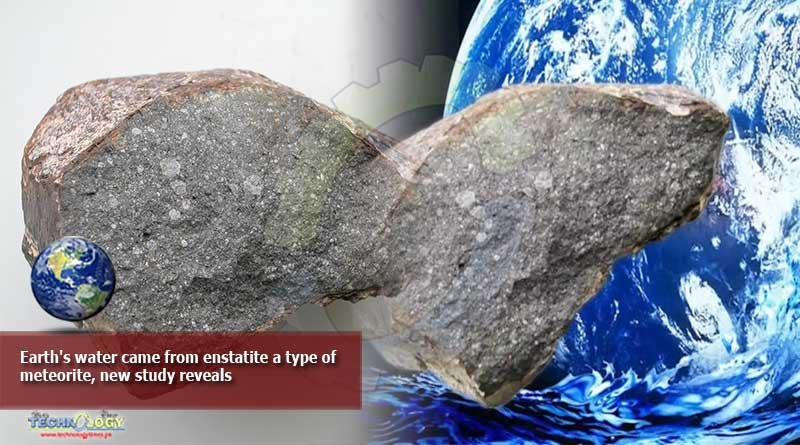A type of meteorite called an enstatite chondrite has similar isotopic composition to terrestrial rocks and thus may be representative of the material that formed Earth.

A new study published in the journal Science shows that these meteorites contain sufficient hydrogen to have delivered to Earth at least three times the mass of water in its oceans.
Enstatite chondrites are space rocks forged from the nebula that formed the Solar System.
They are rare, making up only about 2% of known meteorites in collections. But their isotopic similarity to terrestrial rocks make them particularly compelling.
They have similar oxygen, titanium and calcium isotopes as Earth, and the new study showed that their hydrogen and nitrogen isotopes are similar to Earth’s, too.
“Our discovery shows that the Earth’s building blocks might have significantly contributed to the Earth’s water,” said Dr. Laurette Piani, a researcher at the Université de Lorraine.
“Hydrogen-bearing material was present in the inner Solar System at the time of the rocky planet formation, even though the temperatures were too high for water to condense.”
The building blocks of Earth are often presumed to be dry. They come from inner zones of the Solar System where temperatures would have been too high for water to condense and come together with other solids during planet formation.
The meteorites provide a clue that water didn’t have to come from far away.
“The most interesting part of the discovery for me is that enstatite chondrites, which were believed to be almost dry, contain an unexpectedly high abundance of water,” said Dr. Lionel Vacher, a postdoctoral researcher at Washington University in St. Louis.
“If enstatite chondrites were effectively the building blocks of our planet — as strongly suggested by their similar isotopic compositions — this result implies that these types of chondrites supplied enough water to Earth to explain the origin of Earth’s water, which is amazing!”
The team also proposes that a large amount of the atmospheric nitrogen — the most abundant component of the Earth’s atmosphere — could have come from the enstatite chondrites.
“Only a few pristine enstatite chondrites exist: ones that were not altered on their asteroid nor on Earth,” Dr. Piani said.
“In our study, we have carefully selected the enstatite chondrite meteorites and applied a special analytical procedure to avoid being biased by the input of terrestrial water.”
Coupling conventional mass spectrometry and secondary ion mass spectrometry allowed the scientists to precisely measure the content and composition of the small amounts of water in the meteorites.
“Prior to this study, it was commonly assumed that enstatite chondrites formed close to the Sun,” Dr. Piani said.
“These chondrites were thus commonly considered dry, and this frequently reasserted assumption has probably prevented any exhaustive analyses to be done for hydrogen.”
The article is originally published at sci-news.
